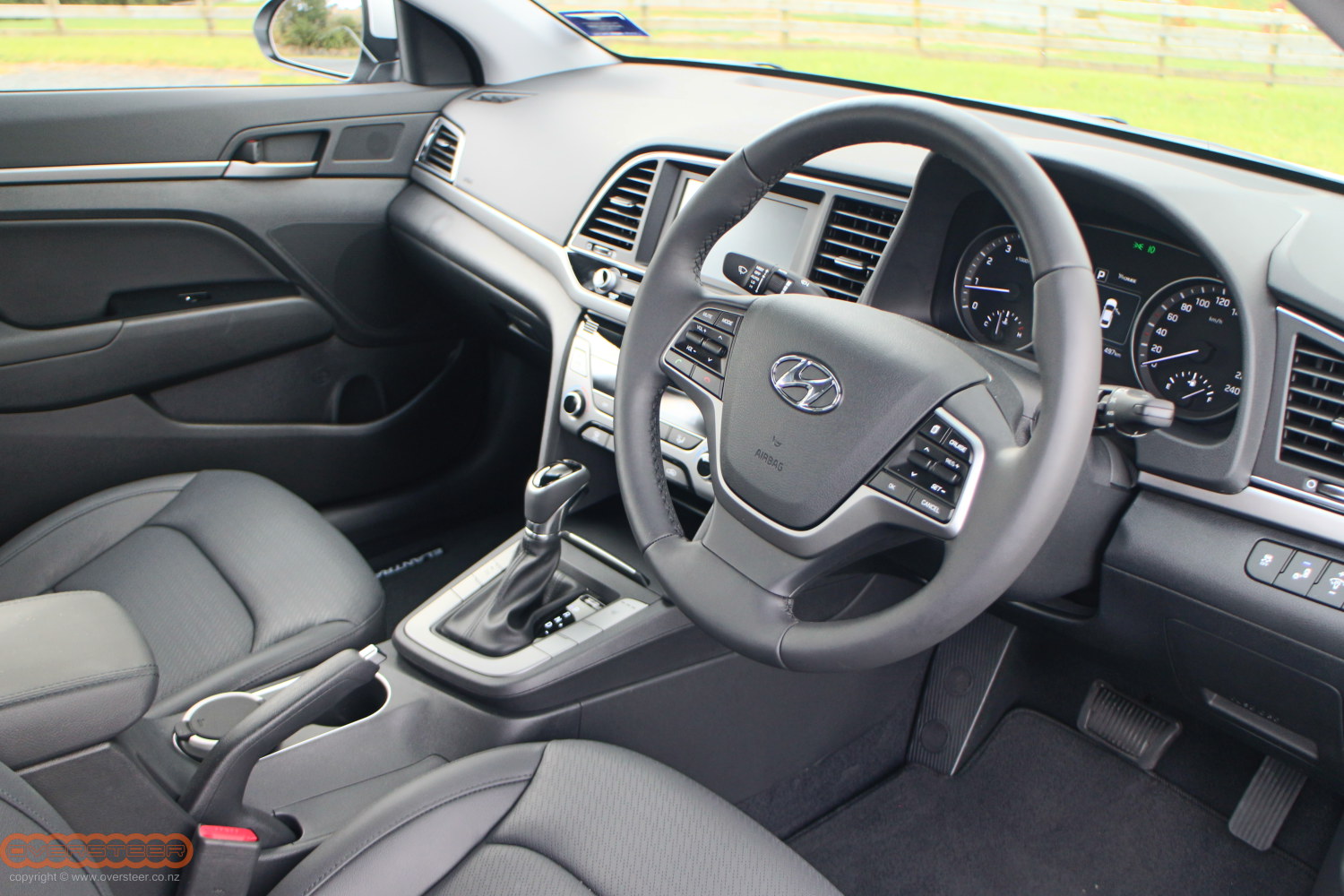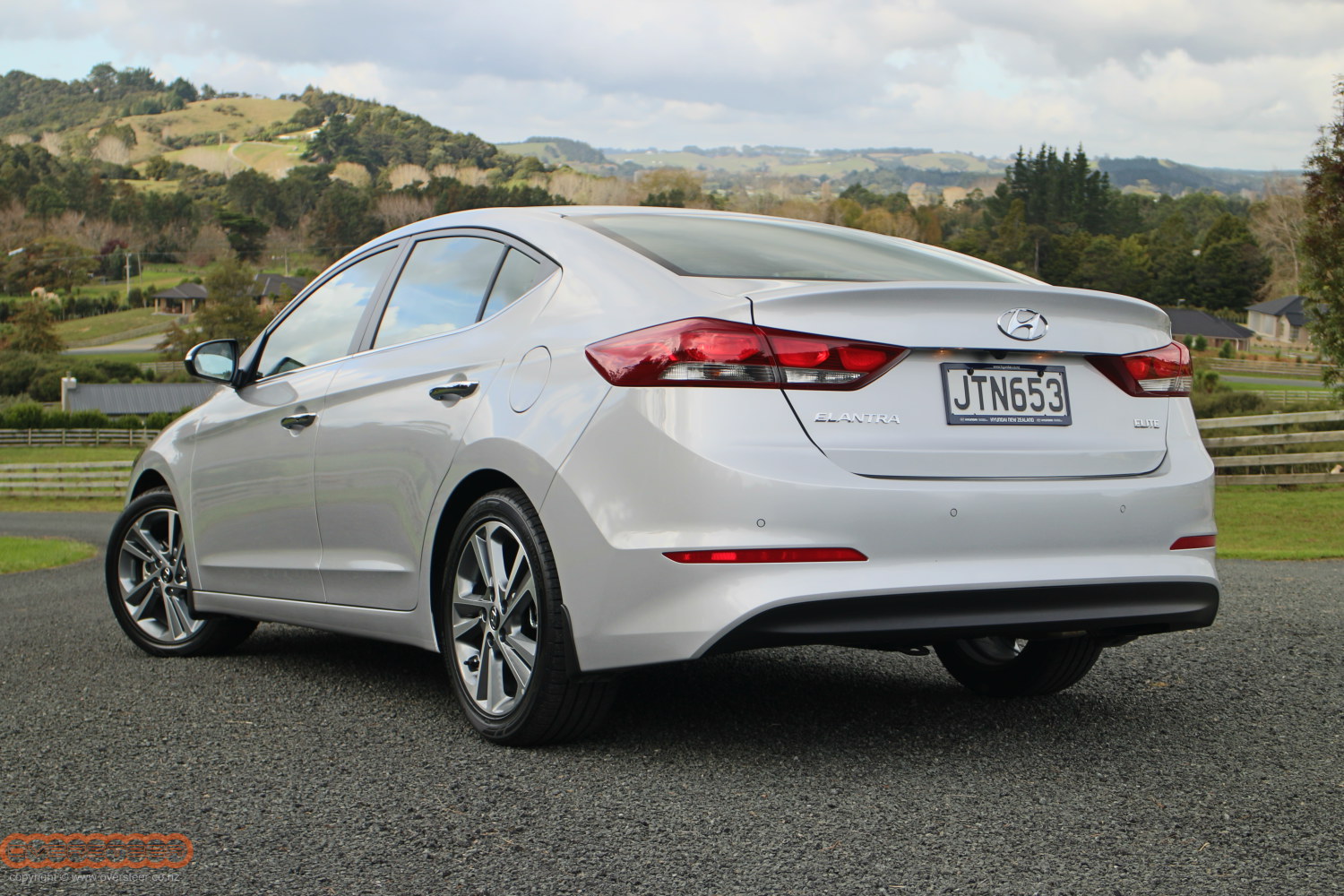What is it?
Only the best selling Hyundai model globally. Yes, really!
While small sedans don’t generally get a whole lot of love in New Zealand, on a global scale they tend to do particularly well, with our Asia-Pacific neighbours in particular liking them rather a lot. That doesn’t mean the Aussies, by the way. They, like us, tend to prefer our three box sedans on a larger scale (or, as it now seems, not at all).
Anyway, the Elantra has been in the Hyundai line up for 25 years now, with the first model launching in 1991. It’s now on its 4th generation and Hyundai have sold more than ten million of the little suckers since then.
So it makes sense that Hyundai would put a fair bit of effort into ensuring its largest selling model was particularly good. So have they succeeded? Read on…
How much does it cost?
The standard Elantra starts at $35,990 for the six-speed automatic version, while a six-speed manual version is available as a special order for $34,490.
The top spec Elite is automatic only and costs $39,990.
What is its opposition?
Everything else in the sadly unloved booted section of the small car segment. Stuff like the Holden Cruze and the sedan versions of the Mazda3, Toyota Corolla, Nissan Pulsar, Honda Civic as well as the five door hatch versions of the aforementioned vehicles. Also included in the competitor spread for the Elantra would have to be larger mid-size sedans, like Hyundai’s own i40, for those sedan buyers looking to do the ever popular “downsizing” thing.
What powers it?
Just the one four-cylinder 2.0-litre petrol engine is offered in both Elantra models the standard car and the up-spec Elite.
Pumping out 112kW of power at 6,200rpm and 192Nm of torque at 4,000rpm, the sole petrol offering is part of Hyundai’s proven NU engine range and sips fuel at the rate of 7.2L/100km, or 7.1 if you go for the special-order six speed manual transmission.
What has it got?
More spec for the same money as before, basically.
The standard Elantra is an impressively well-equipped model, but the Elite takes things to a new level again.
The standard Elantra comes standard with 16-inch alloy wheels, a 7-inch multimedia touchscreen that includes Apple CarPlay and (soon) Android Auto, automatic headlights, Bluetooth phone connectivity and audio streaming, heated side mirrors, keyless entry and a reversing camera.
The Elite adds 17-inch alloy wheels, a blind spot monitoring system, daytime running lights, leather seats with heated front seats and electric driver’s seat adjustment, dual zone climate control, lane change assist, rear cross traffic alert, a reversing camera with parking sensors, rain sensing wipers and a smart boot (automatic opening) system.
Click here to download full specs of the Hyundai Elantra – Elantra specs
What’s good about it?
The Elantra’s new face not only now matches the newer members of the Hyundai family, it also looks great on the small car, as does the exterior design on a whole. High levels of equipment for the money is impressive, as is the Elantra’s ride and handling.
But the best bit of the package – from an enthusiastic driver’s point of view, that is – is the nicely-weighted, brilliantly accurate steering.
What’s not so good?
The interior is rather dark and drab, as well as featuring some hard, unattractive plastic sections on the door trim.
The leather seats in the Elite aren’t the most supportive, but are very comfortable and, while the steering is brilliantly accurate, it has an odd tendency to get artificially heavy when you really turn it in hard.
First impressions?
Deeply impressive for the money, the Elantra makes a brilliant value-for-money argument in either spec level, with the extra $4K asked for the Elite a relative bargain for the equipment involved
Comfortable, attractive and actually engaging to drive, the Elantra is easily one of the best things available today in the small sedan segment.
Previously even the best Hyundai’s have had a weak spot when it came to steering. It was okay, just not great.
Having largely banished the rack rattle that used to plague them, even the best of them lacked a particularly cohesive, convincing feel and possessed a certain vagueness that all the fake steering “modes” in the world couldn’t hide.
Not so with the Elantra. The convincing maturity shown in the Elantra’s ride, handling and steering is proof positive that the days that Korean cars – and Hyundai in particular – could be considered the poor cousin to a Japanese alternative are long gone.
Hyundai are aiming to sell around 300 Elantras a year and, if you aren’t completely committed to the idea of a small hatch (or SUV), then giving this small sedan a look would truly be worthwhile.
Anything else?
Here’s a link to the Elantra page on Hyundai NZ’s website.






You must be logged in to post a comment.